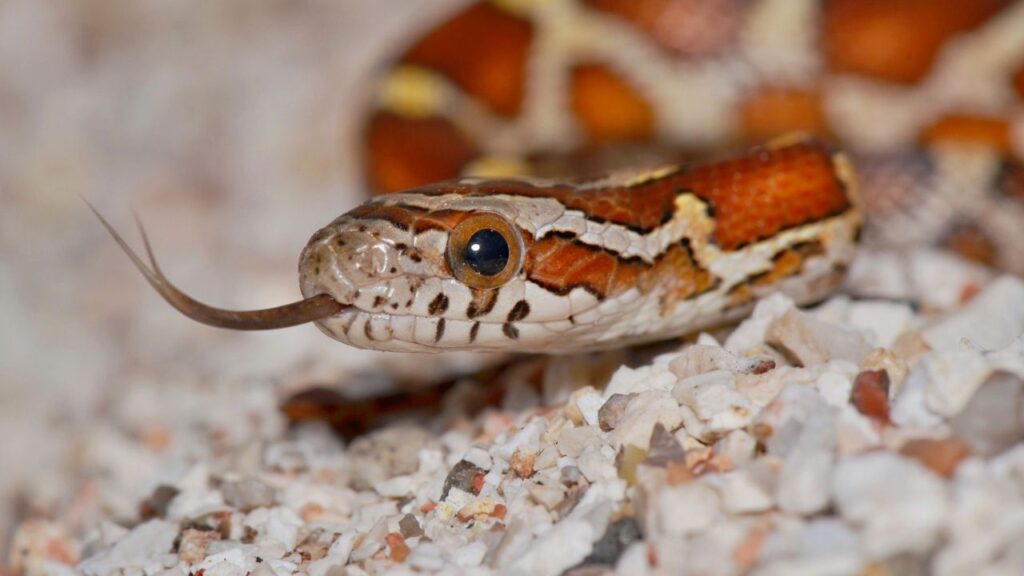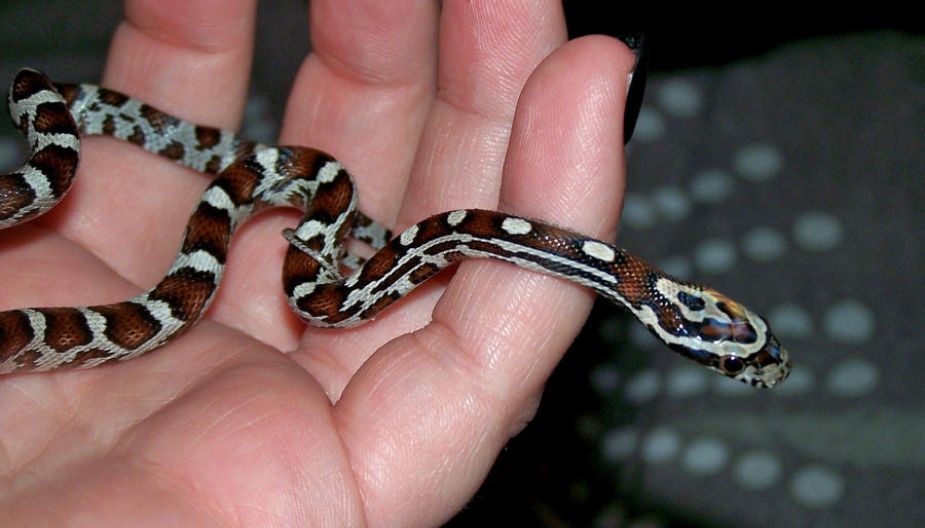Did you know that corn snakes, despite being solitary creatures in the wild, can exhibit signs of loneliness in captivity? Understanding the social side of snakes, especially with a commonly kept species like the corn snake, is crucial for their well-being.
As a responsible owner, it's important to consider their social behaviors and how they might be impacted by isolation in a confined environment. So, what are the signs of loneliness in corn snakes, and what can you do to mitigate it?
Social Behaviors of Corn Snakes
Do corn snakes exhibit social behaviors, or are they solitary creatures?
Behavioral studies have shown that corn snakes are generally solitary animals, preferring to live and hunt alone. However, this doesn't mean they lack social behaviors altogether.
In the wild, they may interact during mating seasons or occasionally bask together in areas with optimal temperature and humidity. These interactions are brief and primarily focused on reproduction or thermoregulation rather than forming social bonds.
Communication methods among corn snakes are mainly based on non-verbal cues. They use body language, such as posturing and scent marking, to convey their intentions to other snakes. When it comes to mating, the male corn snake may engage in a courtship ritual that involves rubbing his chin on the female's body to leave a pheromone trail, signaling his readiness to mate.
Understanding the social behaviors and communication methods of corn snakes can help ensure their well-being in captivity. While they may not seek constant companionship, providing appropriate hiding spots and environmental enrichment can help mimic the occasional interactions they'd have in the wild, promoting their overall welfare.
Signs of Loneliness in Corn Snakes
Loneliness in corn snakes can manifest in various ways, reflecting their natural tendencies as solitary animals. When a corn snake is feeling lonely, it may exhibit the following signs:
- Behavioral changes: You may notice changes in your corn snake's behavior, such as increased hiding, reduced activity, or loss of appetite. These changes can indicate a shift in their mental and emotional state.
- Lack of social interaction: Corn snakes, despite being solitary creatures, still benefit from environmental stimulation and occasional social interactions. If your snake seems disinterested in exploring its surroundings or shows little response to your presence, it could be a sign of loneliness.
- Seeking environmental stimulation: Lonely corn snakes may exhibit behaviors aimed at seeking out environmental stimulation. This could include excessive exploration of their enclosure or repeated attempts to escape.
- Impacted mental health: Ultimately, prolonged loneliness can have a negative impact on the mental health of corn snakes. It's essential to monitor their behavior and provide appropriate environmental enrichment to support their well-being.
The Importance of Enrichment
How can you ensure that your corn snake's environment provides the enrichment they need to thrive?
Enrichment activities are crucial for ensuring the behavioral stimulation of your corn snake. Providing a stimulating environment helps keep your snake active and mentally engaged, contributing to their overall well-being.
There are various ways to offer enrichment for your corn snake. First, consider creating a diverse habitat with different textures, hiding spots, and climbing opportunities. This can mimic their natural environment and provide mental and physical stimulation.
Additionally, introducing novel objects or scents into their enclosure can pique their curiosity and keep them engaged. Rotating and varying these items regularly can prevent boredom and encourage exploration.
Another effective way to provide enrichment is through regular handling and gentle interaction. This not only helps in building trust but also offers mental stimulation for your snake.
Creating a Social Environment for Corn Snakes
Consider incorporating a companion or allowing supervised interactions with other corn snakes to create a social environment for your pet. Snake companionship can provide enrichment activities that stimulate your corn snake's mind and prevent loneliness. Here are a few ways to create a social environment for your corn snake:
- Introducing a Companion: Consider introducing a compatible corn snake companion into the same enclosure if it's large enough to accommodate multiple snakes. This can provide social interactions and environmental stimulation for your pet.
- Supervised Interactions: If introducing a permanent companion isn't feasible, supervised interactions with other corn snakes can also provide social enrichment. Ensure that the interactions are closely monitored to prevent any aggression or stress.
- Enrichment Activities: Implement various enrichment activities such as hiding spots, climbing branches, and tunnels to encourage social interactions and mental stimulation for your corn snake.
- Rotation of Enclosure Items: Regularly rotate and change the layout of your corn snake's enclosure to provide new environmental stimuli and keep their living space interesting.
Creating a social environment for your corn snake can help ensure their well-being and provide a fulfilling and engaging life for your pet.
Addressing Corn Snake Loneliness
To alleviate potential loneliness in your corn snake, providing environmental enrichment and appropriate social interactions can contribute to their overall well-being. When it comes to snake companionship, it's essential to consider the benefits and drawbacks.
While some snakes may benefit from having a companion, others prefer solitude. If you decide to introduce another snake into the same enclosure, closely monitor their interactions to ensure they get along and don't become aggressive towards each other.
On the other hand, human interaction is crucial for bonding and socialization. Spending time with your corn snake, handling them gently, and creating a positive environment can help alleviate loneliness. However, it's important to remember that each snake has its own personality, and some may be more social than others.
By observing your corn snake's behavior, you can better understand their needs and preferences, allowing you to tailor their environment and interactions to suit them best.
Ultimately, by providing opportunities for both snake companionship and human interaction, you can help address any potential loneliness your corn snake may experience.
Conclusion
So, can corn snakes get lonely?
It's important to consider their social behaviors and signs of loneliness.
Providing enrichment and creating a social environment can help address any potential loneliness in your corn snake.
But remember, there's still more to explore when it comes to understanding the social side of these fascinating creatures.
Keep an eye out for future research and tips on how to keep your corn snake happy and fulfilled.


